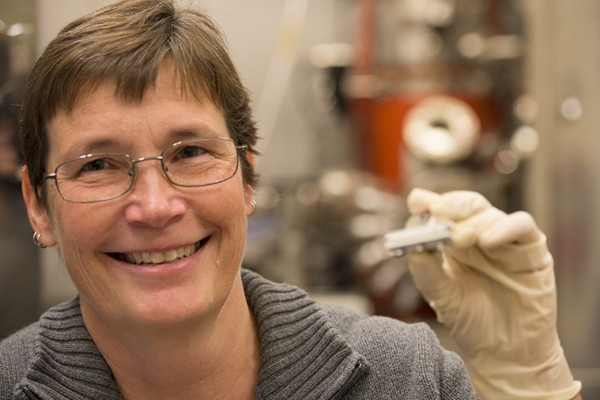Seven internationally famous specks of dust
This August, a consortium of 65 scientists announced in the journal Science that they have so far found seven probable but not confirmed interstellar dust specks in a collector returned to Earth by the Stardust spacecraft in 2006. Undergraduate students at Washington University in St. Louis found three of the seven specks of dust.
$1.38 million to pick ‘large’ pieces of supernova grit out of meteorite
Ernst K. Zinner, research professor of physics and of earth and planetary sciences, both in Arts & Sciences at Washington University in St. Louis, has received a three-year, $1,380,000 grant from the National Aeronautics and Space Administration to study presolar grains in a sample of the Murchison meteorite, a primitive meteorite that fell to Earth near the town of Murchison, Australia, in 1969. Presolar grains are literally tiny bits of stars — stardust — that were born and died billions of years ago, before the formation of the solar system. Some carry within them clues to the process of nucleosynthesis by which new elements are forged in the bellies of supernovae.
Washington People: Tom Bernatowicz
Tom Bernatowicz, PhD, professor of physics in Arts & Sciences, began at WUSTL studying stardust, tiny crystals of material that formed around dying red giant stars or in exploding supernovae. While he remains interested in these tiny grains, lately he has been devoting much of his time to creating an introductory physics course that is so lively and engaging the students leave understanding why physicists are so passionate about their work.
Physicist to be recognized for helping ‘revolutionize astronomy’
Studying stars has never been so easy, thanks to Ernst K. Zinner, Ph.D., research professor of physics and of earth and planetary sciences, both in Arts & Sciences, at Washington University. For the past 30-plus years, Zinner has helped develop and fine-tune increasingly sophisticated instruments that allow researchers to get detailed information about circumstellar and interstellar dust — actual stardust — right in their own labs. These precision instruments use a measurement technique called secondary ion mass spectrometry (SIMS). To recognize Zinner’s important contributions to the development of SIMS and its many applications in the earth and space sciences, a scientific symposium will be held Feb. 3-4 in Crow Hall, Room 201.
‘Real’ stardust from NASA mission lands on campus
Stardust, the NASA spacecraft mission, was given that name in hopes that the seven-year journey to capture comet samples would bring back to Earth, well, stardust. In an article in a special issue of the journal Science, Washington University researchers are the first to report that a sample they received from the mission actually does contain stardust — particles that are older than the sun.
Washington University lab first to find ‘real’ stardust from Stardust mission
VIDEO AVAILABLE: Stardust, the NASA spacecraft mission, was given that name in hopes that the seven-year journey to capture comet samples would bring back to Earth, well, stardust. In an article coming out in the Dec. 15, 2006, issue of the journal Science, researchers at Washington University in St. Louis are the first to report that a sample they received from the mission actually does contain stardust — particles that are older than the sun.
WUSTL researcher available to discuss Stardust mission find
Frank J. Stadermann, Ph.D., senior research scientist in physics in Arts & Sciences at Washington University and a sample adviser for NASA’s Stardust mission will discuss his research team’s significant find from the Stardust mission, the first U.S. space mission dedicated to the exploration of a comet, and the first robotic mission designed to return extraterrestrial material from outside the orbit of the Moon.
First silicate stardust found in a meteorite
In the March 5 issue of Science, Ann Nguyen of Washington University in St. Louis and her advisor, Ernst K. Zinner, Ph.D., research professor of physics and of earth and planetary sciences, both in Arts & Sciences, describe nine specks of silicate stardust — presolar silicate grains — from one of the most primitive meteorites known. This is the first reported finding of silicate stardust from a meteorite.
First silicate stardust found in a meteorite
Ann Nguyen chose a risky project for her graduate studies at Washington University in St. Louis. A university team had already sifted through 100,000 grains from a meteorite to look for a particular type of stardust — without success. In 2000, Nguyen decided to try again. About 59,000 grains later, her gutsy decision paid off. In the March 5 issue of Science, Nguyen and her advisor, Ernst K. Zinner, Ph.D., research professor of physics and of earth and planetary sciences, both in Arts & Sciences, describe nine specks of silicate stardust — presolar silicate grains — from one of the most primitive meteorites known.

